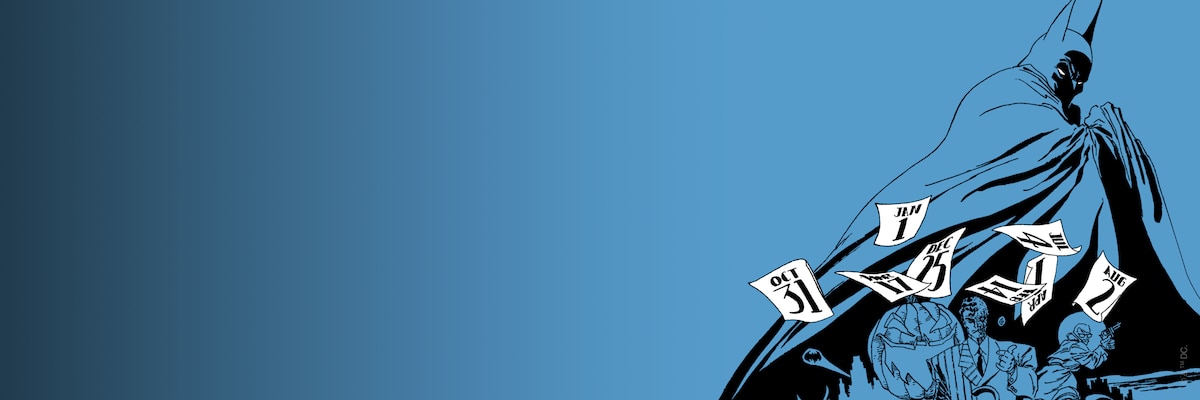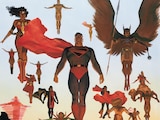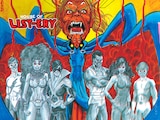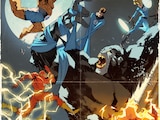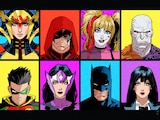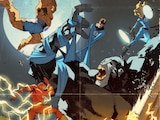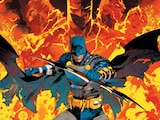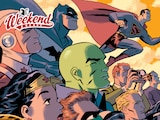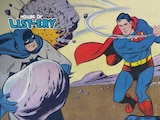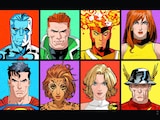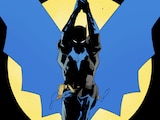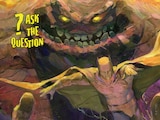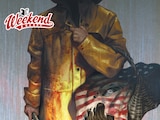Sometimes the best stories are composed of the simplest elements. Take 1996’s Batman: The Long Halloween, for example. Thirteen months. One mystery. One creative team.
Writer Jeph Loeb and artist Tim Sale had first partnered on 1991’s Challengers of the Unknown limited series (it was Loeb’s first comics work following a successful screenwriting career). Sale, previously a lifelong Marvel fan, had shown how perfectly his chiaroscuro technique suited Batman in “Blades,” a 1991 story (written by James Robinson) in Legends of the Dark Knight, the anthology title devoted to Batman’s early days. The Legends of the Dark Knight editor, Archie Goodwin, loved Sale’s work and reunited him and Loeb on three Halloween specials: 1993’s “Fears,” 1994’s “Madness,” and 1995’s “Ghosts.” Each a seasonal hit.
Goodwin then suggested Sale and Loeb do something with Gotham’s gangsters, particularly mob boss Carmine “The Roman” Falcone, introduced in Frank Miller and David Mazzucchelli’s acclaimed Batman: Year One. Writer Mark Waid recommended Loeb include a pre-Two-Face Harvey Dent since the character’s back story had not yet been explored in comics, despite Dent appearing in Year One as a young assistant district attorney.
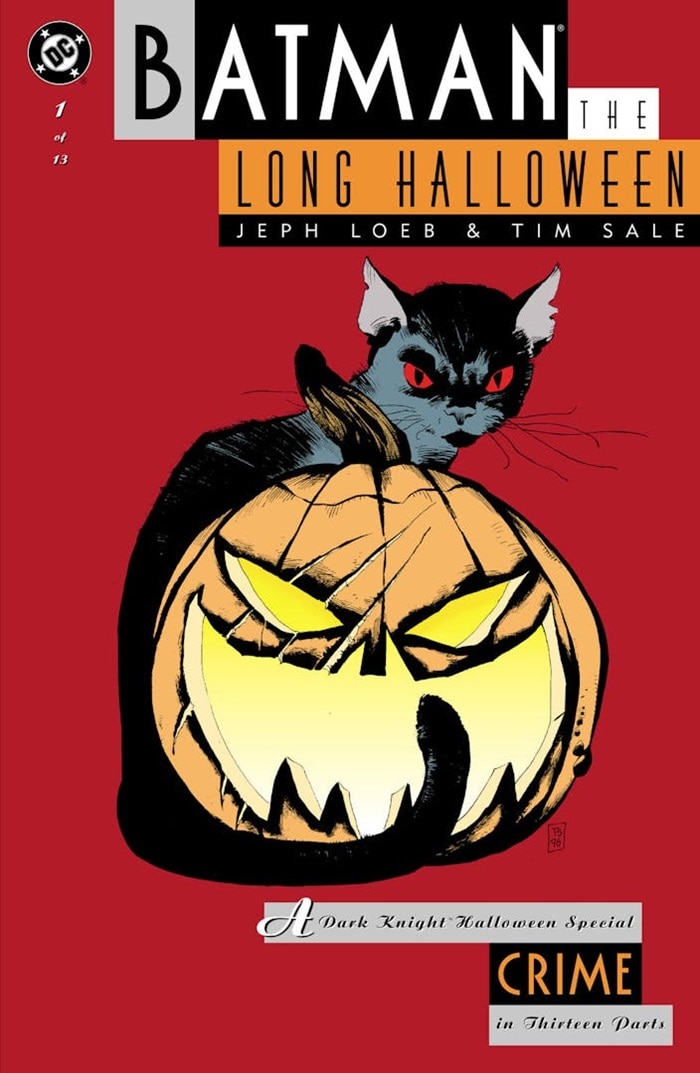
Loeb, a fan of gangster movies and film noir, developed a year-long crime saga that would become Batman’s first maxiseries and serve as an unofficial sequel to Miller’s Year One (disregarding the events of the already published Batman: Year Two). It sees Dent, now a full DA, partnering with Gordon and Batman in an effort to take down Falcone. Meanwhile, the Dark Knight battles a new villain, Holiday, responsible for a series of seemingly random gangland killings on national holidays (and one birthday). Along the way, fate transforms Dent into Two-Face, Batman’s relationship with Catwoman deepens and Gotham’s gangs are replaced by the colorful supervillains of Batman’s rogues gallery.
Though The Long Halloween presents an epic story, Loeb and Sale favored a pared-down approach to their storytelling. It was designed to appeal to both old and new fans, as Sale told me when I interviewed him in 2008.
“I like three panels to a page,” said Sale, “and I like a high-contrast look in my artwork. I don’t use full bleeds. I don’t break the panel border, either with balloons or with artwork. I like a cleaner look, aesthetically.
“Let’s say somebody loves the new Batman movie, and they go, ‘I’m going to go check out Batman comics. I haven’t seen one in twenty years.’ They go and they see there’s a million speed lines and a million panels and a million words on a page. They’re going to go, ‘Okay, this is too much f*cking work.’ I know that I look at those pages and I think it’s too much f*cking work to follow. I [want them] to open my book and go, ‘Well, that’s kind of cool. I wonder what happens next.’ I think one of the ways to do that is to not have it be so busy all the time.”
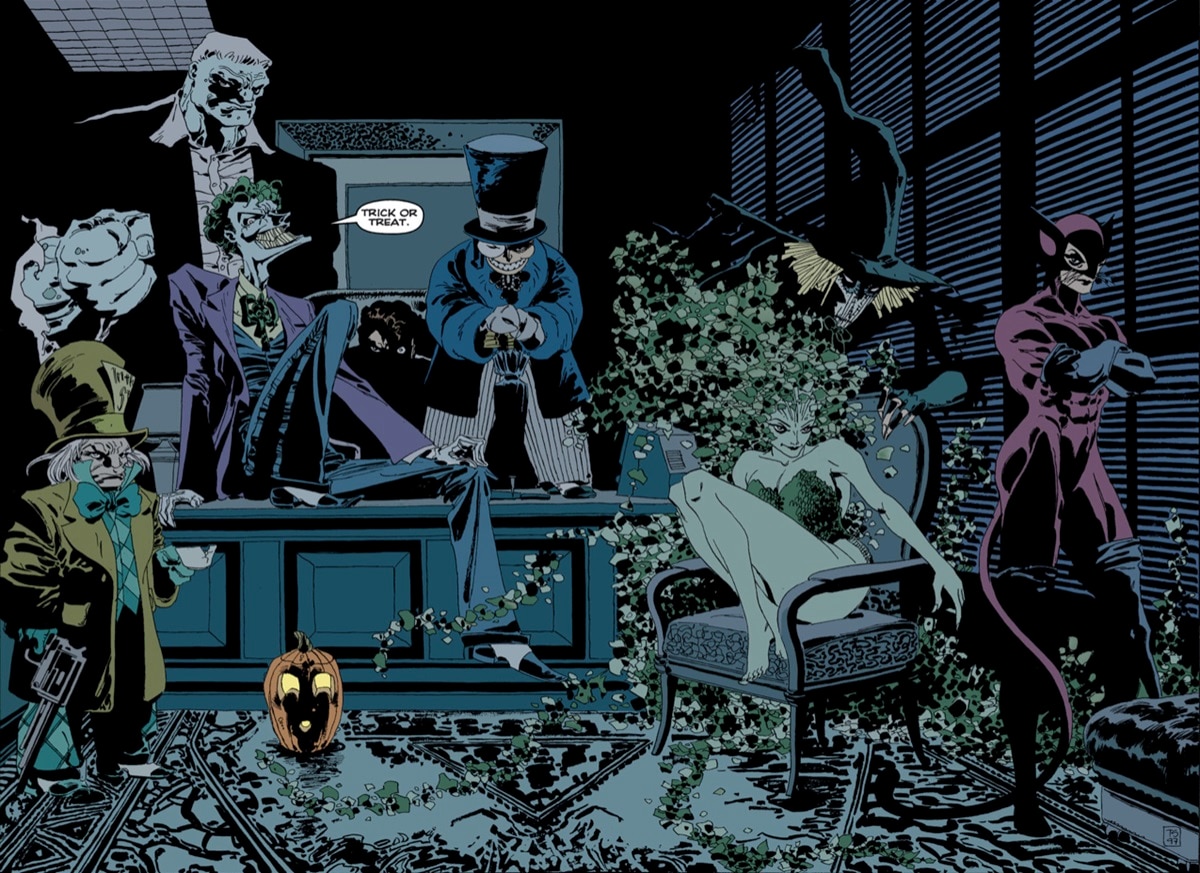
After 29 years, The Long Halloween’s lean approach hasn’t aged a day. Loeb’s muscular script paired with Sale’s shadowy Gotham and nightmarish take on Batman’s foes—balanced beautifully by Gregory Wright’s muted colors—resulted in an Eisner Award-winning book (“Best Limited Series,” 1998) that’s as timeless as Year One. It would prove almost as influential.
Loeb and Sale followed The Long Halloween with a longer sequel series, 1998’s fourteen-issue Batman: Dark Victory. Taking place several years after its predecessor, Dark Victory explores the early days of Bruce Wayne’s relationship with a young Dick Grayson, a.k.a. Robin the Boy Wonder. It also introduces a new serial killer, the Hangman, and a new crime boss in the Roman’s daughter, Sofia Falcone. With return visits from many members of the rogues gallery, Dark Victory may not be as novel as The Long Halloween, but Sale’s art is even bolder.
“I’m in the minority,” said the artist, “in that I much prefer it to Long Halloween. I know that my work is better. I was a much better artist by the time I got to it than I was when we did Long Halloween. I actually think Jeph’s writing is better, in almost every respect. What it doesn’t have is that it’s not the first, and so it doesn’t have…the sort of groundbreaking quality, as it were, of Long Halloween.”
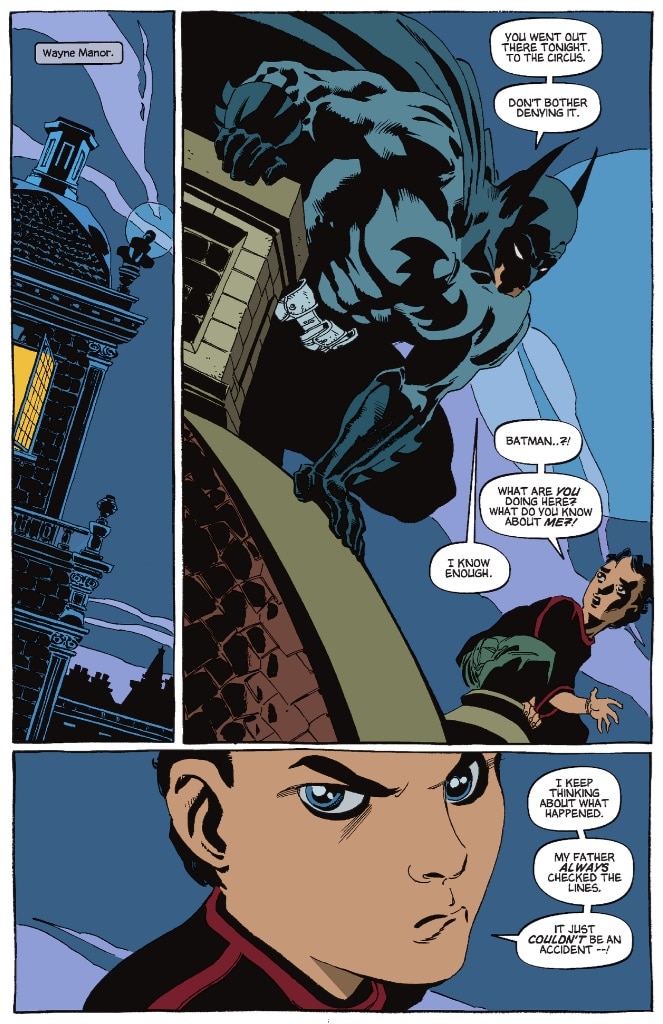
With Dark Victory bringing a resolution to Loeb and Sale’s Gotham storyline, the duo found room to explore more of Selina Kyle’s arc in 2004’s six-issue Catwoman: When in Rome, set during the time she’d left Gotham (between the former series’ Valentine’s Day and Labor Day). The team would return once more to Batman over fifteen years later with the 2021 one-shot Batman: The Long Halloween Special, “Nightmares.” An epilogue centered on Two-Face, it sadly served as Sale’s final published Batman story before he passed away in 2022.
“Nightmares” would eventually serve as a prologue for 2024’s still ongoing Batman: The Long Halloween – The Last Halloween. Written by Loeb as a tribute to his late partner’s work and illustrated by many of today’s top artists, The Last Halloween finds Batman confronted by a new mystery, a Holiday copycat killer.
In addition to Sale and Loeb’s unforgettable stories, The Long Halloween saga’s balance of larger-than-life supervillains and grounded crime thriller is a core part of its legacy. Opening the door for other tales focusing on the human side of Gotham City, like Ed Brubaker and Greg Rucka’s Gotham Central—which in turn inspired TV’s Gotham—and 2019’s Oscar-winning Joker.
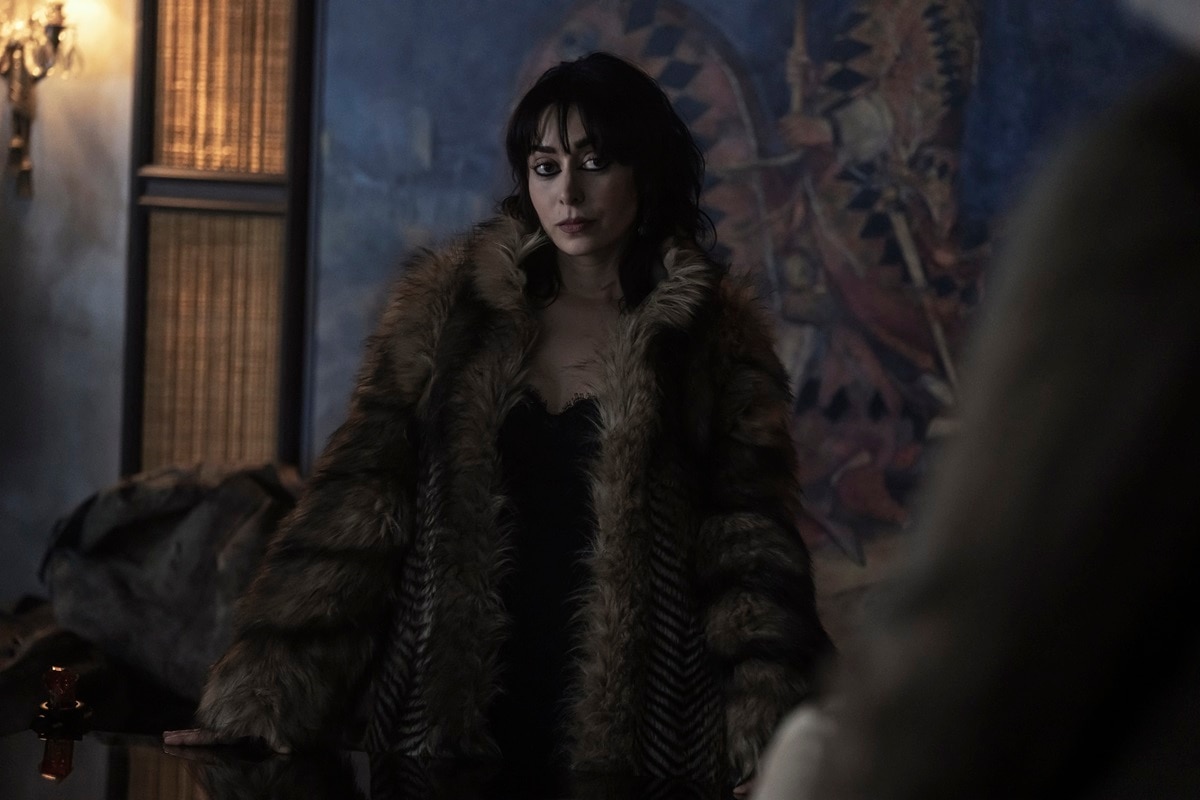
Director Christopher Nolan and writer David Goyer paid The Long Halloween perhaps its ultimate tribute by placing its central Gordon-Dent-Batman dynamic—in which Batman apprehends criminals, Gordon arrests them, and Dent prosecutes them—at the heart of 2008’s The Dark Knight. (Indeed, star Christian Bale studied The Long Halloween and Dark Victory in his trailer between takes.) The use of Carmine Falcone as Gotham’s number one gangster in 2005’s Batman Begins would eventually influence Matt Reeves’ 2022 The Batman, and Loeb and Sale’s creation Sofia Falcone in 2024’s The Penguin would result in an Emmy for star Cristin Milotti. The Long Halloween was also adapted into a two-part 2021 animated film.
“I just loved drawing Batman in that world,” said Sale of the entire Long Halloween phenomenon. “I hope I always have the opportunity to do that. I just think he’s a really great character, and I think he really fits me. Or I fit him. However that works.”
Batman: The Long Halloween, Batman: Dark Victory, Catwoman: When in Rome and Batman: The Last Halloween can all be found at your local comic book shop or read on DC UNIVERSE INFINITE.
Joseph McCabe writes about comics, film and superhero history for DC.com. Follow him on Instagram at @joe_mccabe_editor.
